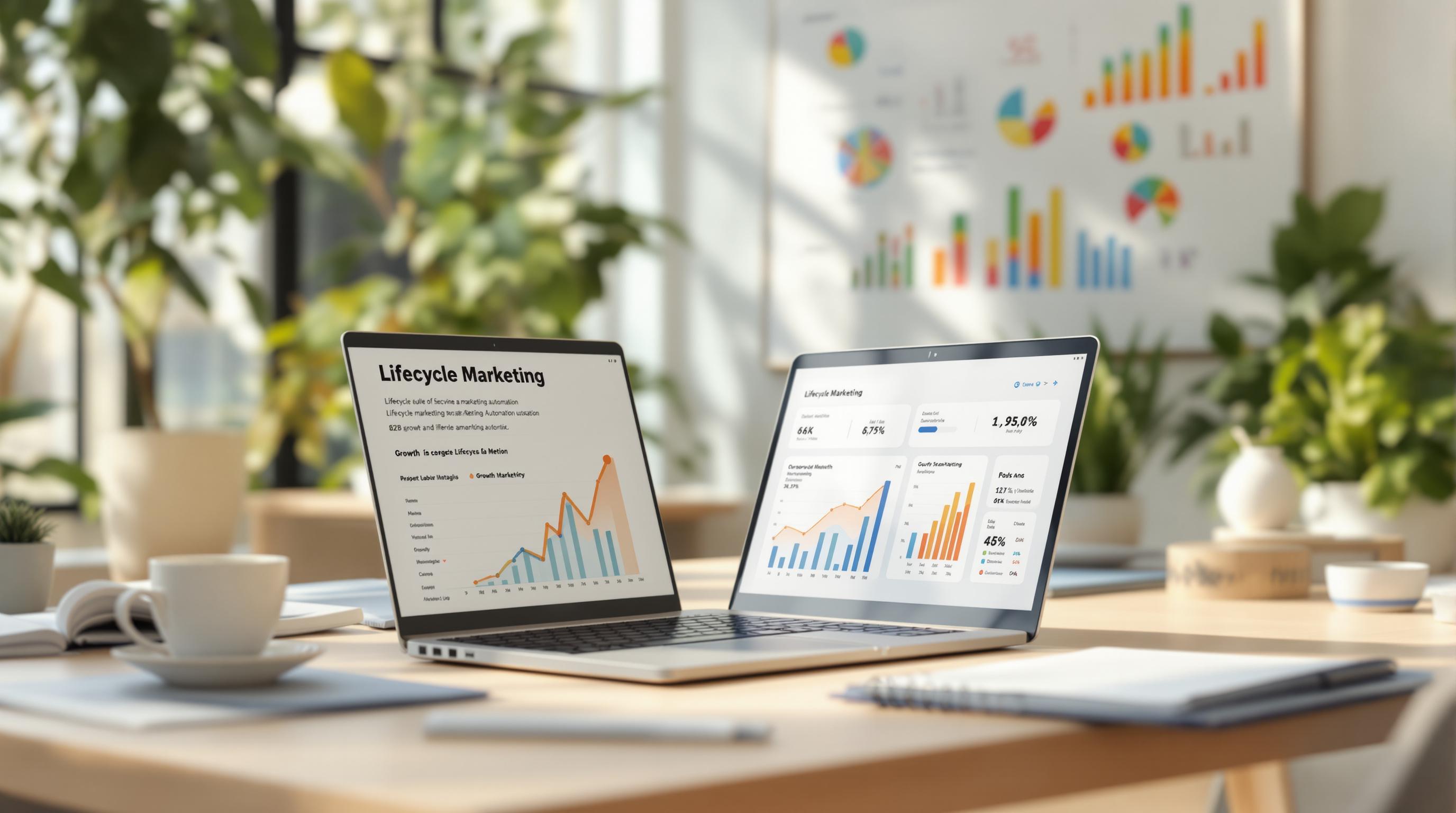Digital sponsorship models are reshaping online monetization by offering precise targeting, real-time analytics, and flexible payment options. Here's what you need to know:
-
Key Models:
- CPM (Cost Per 1,000 Impressions): Pay for visibility.
- CPC (Cost Per Click): Pay for clicks to drive traffic.
- CPA (Cost Per Action): Pay for specific outcomes (e.g., lead generation).
- Fixed-Price Sponsorships: Set fees for defined benefits.
- Mixed Models: Combine fixed fees with performance-based incentives.
-
Benefits:
- Real-time data for tracking and adjustments.
- Advanced targeting like behavior-based and AI-driven strategies.
- Multi-channel engagement across directories, publications, and digital events.
-
Emerging Trends:
- AI for smarter targeting and campaign optimization.
- VR/AR sponsorships for interactive, immersive experiences.
-
How to Choose:
- Match your goals (e.g., visibility, lead generation) with the right model.
- Use tools like Google Analytics or AI platforms to track performance.
- Diversify revenue streams and set benchmarks to minimize risks.
Digital sponsorships outperform traditional methods with their precision, flexibility, and measurable outcomes, making them essential for modern marketing strategies.
The Advertising Business Model: Unlocking Revenue
Main Digital Sponsorship Models
Digital sponsorship models have grown to provide businesses with various ways to generate revenue and meet their goals. Here's a breakdown of the main models shaping B2B digital sponsorships.
CPM (Cost Per 1,000 Impressions)
CPM focuses on increasing brand visibility. Sponsors pay for every 1,000 impressions their ads receive. Costs depend on factors like content type and ad placement. Premium options, such as display ads, targeted newsletters, or directory listings, often come with higher rates due to their prime positioning.
CPC (Cost Per Click)
CPC charges advertisers only when someone clicks on their ad, making it ideal for campaigns aimed at driving traffic or generating leads. The cost per click varies based on factors like the industry, the quality of the ad placement, and the targeted audience.
CPA (Cost Per Action)
This model ties payment to specific user actions, such as filling out a form, downloading content, or requesting a demo. By linking costs to measurable outcomes, CPA shifts the financial risk to publishers and provides clear performance metrics.
Fixed-Price Sponsorships
Fixed-price sponsorships involve a set fee for a pre-defined package of benefits. These often include features like directory listings, mentions in newsletters, or content partnerships. For digital events, sponsors might also receive speaking opportunities, virtual booth space, and access to leads, offering a predictable budget structure.
Mixed Payment Models
Mixed models blend elements of other approaches. For example, a campaign might include a fixed monthly fee for exposure, combined with performance-based incentives (similar to CPA) and fees for additional visibility (like CPM).
These models allow sponsors to tailor their approach using data insights to maximize their campaign's effectiveness.
New Digital Sponsorship Trends
Digital sponsorship is shifting as new technologies create more targeted and engaging opportunities for brands.
AI Sponsorship Targeting
Artificial intelligence is changing how sponsorships reach audiences. AI-powered tools now allow for highly personalized sponsorships and smarter campaign management. For example, the B2B Ecosystem's QuantAIfy suite showcases how AI can improve targeting and make data-driven decisions.
Here’s how AI is being used:
- Predictive analytics to estimate how campaigns will perform.
- Dynamic content that adjusts based on real-time audience engagement.
- Automated bid management to fine-tune sponsorship spending.
At the same time, immersive tech is offering brands new ways to connect with their audience.
VR and AR Sponsorship Options
Virtual and augmented reality are creating interactive sponsorship experiences that merge the digital and physical worlds. Brands are exploring these technologies in exciting ways:
- Virtual event sponsorships, where branded virtual spaces enhance conferences and exhibitions.
- Augmented reality product demos, allowing users to interact with products on their mobile devices.
- Mixed reality ads, seamlessly blending sponsored content into both online and real-world settings.
As these tools become more accessible, they’re likely to become a staple in digital sponsorship strategies.
sbb-itb-01010c0
Selecting Your Revenue Model
Decision Criteria
When choosing a sponsorship model, consider these key factors:
- Audience Size: Larger audiences work well with CPM models, offering predictable revenue.
- Content Type: Interactive content aligns with CPC models, while educational content is better suited for fixed-price sponsorships.
- Sales Cycle: Longer B2B sales cycles often pair well with CPA models.
- Resource Allocation: Assess your team's capacity to implement and refine the chosen strategy effectively.
By evaluating these factors, you can select a model that matches your campaign's goals.
Aligning Models with Goals
Here’s how different models align with specific objectives:
- CPM: Ideal for campaigns focused on broad visibility and steady revenue.
- CPC: Best for driving engagement and generating leads.
- Fixed-Price Sponsorships: Suitable for stable, long-term partnerships.
- Hybrid Models: Combine guaranteed income with performance-based incentives for a balanced approach.
Once you've chosen a model, ensure you're prepared to address potential risks.
Risk Management
To reduce risks, follow these strategies:
- Diversify Revenue Streams: Mix fixed-price sponsorships with performance-based models to maintain steady income while pursuing growth.
- Set Performance Benchmarks: Define clear KPIs, such as engagement levels, acquisition costs, and ROI, to measure success.
- Leverage AI Analytics: Use AI tools to track audience behavior, market trends, and pricing fluctuations. Platforms like the B2B Ecosystem's analytics suite can help monitor critical risk indicators.
Tracking Sponsorship Results
To get the most out of your digital sponsorships, you need to know how to track performance and make adjustments based on the data.
Key Metrics to Monitor
Tracking the right metrics is essential. These can be grouped into three main categories:
Engagement Metrics:
- Click-through rates (CTR)
- Time spent engaging with content
- Social media shares and interactions
- Comment activity and engagement levels
Outcome Metrics:
- Cost per acquisition (CPA) after the campaign
- Return on ad spend (ROAS)
- Lifetime value (LTV) of customers gained through sponsorships
- Revenue generated per thousand impressions (RPM)
Brand Impact:
- Brand recall rates
- Sentiment analysis (how people feel about your brand)
- Indicators of purchase intent
- Feedback from sponsorship partners
Analytics Software Options
To track these metrics effectively, you’ll need the right tools. Here are some options:
- Google Analytics 4: Great for cross-platform tracking and attribution modeling.
- Adobe Analytics: Offers in-depth audience segmentation and real-time data.
- Mixpanel: Focuses on understanding user behavior and tracking funnels.
For sponsorship-specific needs, consider:
- Klear: Ideal for measuring influencer campaigns.
- Brandwatch: Tracks brand mentions and sentiment across platforms.
These platforms help you stay on top of your data and make informed decisions.
Performance Improvement Tips
Once you have your metrics, use them to tweak and improve your strategy:
- Monitor campaign performance daily and adjust targeting to focus on high-performing audience segments.
- Study audience behavior to better tailor your sponsorship offerings.
- Run A/B tests on content placement, calls-to-action (CTAs), visuals, and timing. Use the results to fine-tune future campaigns.
Summary
Main Points Review
Digital sponsorship revenue models have come a long way, offering various ways to generate income. The main models include CPM (Cost Per 1,000 Impressions), CPC (Cost Per Click), CPA (Cost Per Action), and fixed-price sponsorships. Each caters to different business goals and levels of risk.
When choosing a revenue model, keep these key factors in mind:
- Audience Engagement: Choose a model that aligns with how your audience interacts with your content.
- Revenue Stability: Fixed-price models provide consistent income, while performance-based models may deliver higher earnings but with more variability.
- Resource Needs: Think about the technical tools and expertise required to manage each model effectively.
- Risk Sharing: Understand how each model distributes risk between you and your sponsors.
These considerations form the basis for improving your sponsorship strategy.
Implementation Steps
1. Assessment and Planning
Analyze your digital assets and how your audience engages with them using analytics tools. Resources like the B2B Ecosystem directories can guide you in finding the right marketing and analytics platforms for your needs.
2. Model Selection and Setup
Leverage AI tools to study your market and determine the best pricing. Data-driven insights can help you fine-tune your sponsorship options for better revenue outcomes.
3. Performance Optimization
Set up a tracking system to measure key metrics, such as:
- Engagement (e.g., click-through rates, time spent)
- Revenue (e.g., return on ad spend, revenue per thousand impressions)
- Brand impact (e.g., audience perception)
4. Continuous Improvement
Keep up with industry updates and best practices by engaging with B2B media networks and expert communities. Regularly review your performance data to make adjustments and boost results.


